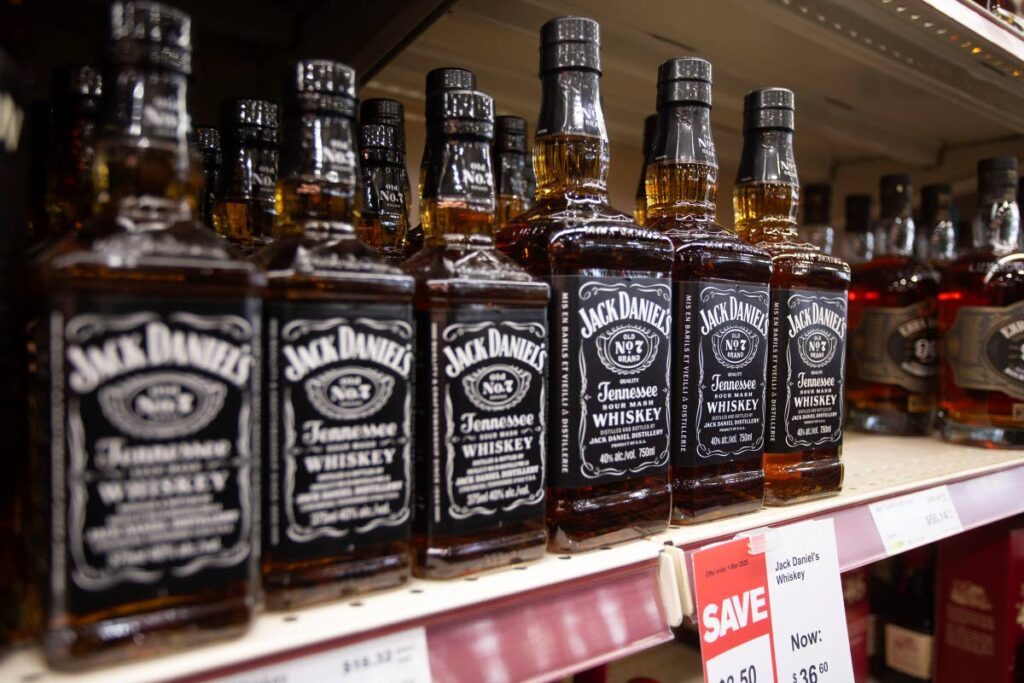Trump's tariff war: how it impacts local import costs

War.
What is it good for? Absolutely nothing.
Whether it is a military conflict between countries, a clash between gangs or a “cold” one, wars, more often than not, result in more pain and suffering for all, rather than gains.
Since US president Donald Trump announced a swathe of tariffs to be imposed on countries such as Canada, Mexico and China, the world has been nervously anticipating a trade war, one that could shake the global economy, even as it is just recovering from a global pandemic and the Ukraine/Russian war.
Thus far, after announcing tariffs on the three countries, the only threat he made good on was against China, with a 10 per cent tariff on all imports going into effect on February 4. Earlier this week, Trump threatened a 25 per cent tariff on Canadian and Mexican imports, and a 10 per cent tariff on Canadian energy products. The Trump administration has held its hand on imposing taxes with Mexico and Canada for 30 days pending negotiations.
The US tariffs on China are additional to tariffs imposed in 2016 during Trump’s first term. Trump may also set his sights on the EU, already suggesting that tariffs against Europe may be imposed.
China has already hit back with a 10-15 per cent tariffs on US energy products and other US products, to take effect by February 10. The threat of a trade war is likely to mean trouble for US citizens who may feel a financial pinch as the US is still dependent on imports from many countries for its manufacturing inputs.
While no tariffs have been placed on countries in the Caribbean, an impasse between US and developed countries is worrisome for the region, including TT, where the lion’s share of food, electronics, machinery and inputs for manufacturing comes from imports.
Business chambers and economists speaking to Business Day expressed real concern that with the threat of higher import costs for many items, TT and the region could become collateral damage in a trade war.
Trump’s first salvo
Trump’s first salvo in the looming trade war was not against China, but against Colombia, a little over a week ago.
The US president in a bid to rid the US of illegal immigrants through mass deportations sent over 200 Colombian nationals back to the country in military airplanes.
But on January 26, Colombian President Gustavo Petro barred the planes from landing, prompting the Trump administration to threaten to levy a 25 per cent tariff on all imports coming in from Colombia.
Petro in social media messages threatened tariffs of his own but, on January 27, Colombia yielded, taking back the immigrants.
The White House immediately took a victory lap as it lauded the US president’s “hard-line approach.”
White House press secretary Karoline Leavitt said the tariffs and sanctions would be held in reserve and not signed unless Colombia fails to honour their agreement to accept deportees.
Similarly, Mexico and Canada, in the face of their own tariffs, conceded to Trump’s demands.
On February 1, Trump announced the tariffs on his two neighbours, with plans to put them into effect by February 4. But on February 3 Trump announced that he reached an agreement with Canadian Prime Minister Justin Trudeau and Mexican President Claudia Sheinbaum.
Sheinbaum promised to deploy 10,000 national guard officers to the US border to stem the flow of drugs and illegal immigrants into the US. She also agreed to establish a bilateral working group with the Trump administration to deal with security, migration and trade.
Trudeau also agreed to beef up drug enforcement as well as appoint a “fentanyl czar” and identify cartels as terrorist organisations.
As a result the Trump administration has stayed its hand on tariffs against Mexico and Canada for 30 days, pending more negotiations.
But China didn’t back down. It fired back with fresh duties which included a 15 per cent tax on certain types of coal and liquefied natural gas (LNG) and a 10 per cent tariff on crude oil, agricultural machinery, large-displacement cars and pick-up trucks.
China’s ministry of commerce and its customs administration also announced new export controls with immediate effect, on more than two dozen metal products and related technologies.
The export controls include tungsten, a critical mineral typically used in industrial and defence applications along with tellurium, used to make solar cells.
It also blacklisted PVH Group which owns Calvin Klein and Tommy Hilfiger, as well as biotech company Illumia, accusing the companies of violating normal market trading principles.
Chambers, economists worry over tariffs
American Chamber of Commerce of TT (AmChamTT) CEO Nirad Tewarie said increased tariffs will result in higher prices in the region and around the world.
“Such action is likely to drive inflation up,” he said.

“The potential for increased unilateral tariffs outside of the World Trade Organisation framework will always be a cause for concern, however, we are optimistic that the US and her allies can find solutions that don’t lead to such actions.”
Tewarie said this is why AmChamTT continues its advocacy for a rules-based trading system.
Confederation of Regional Business Chambers president Vivek Charran said the effect of the tariffs could be compounded as products from countries such as Mexico would be imported at a higher price and re-exported at a corresponding price.
“When you look at the number of food-related brands that we import from the US, those particular brands that would have been processed in the US but imported from Mexico, obviously the tariffs would not only raise prices for consumers in the US but would also rise for importers in TT.”
He added that food is not the only commodity imported from the US which originated from other countries. He said the range of products that are imported through the US and distributed across the region is vast and includes consumer goods, clothing and other items.
Economist Terrence Farrell said while China has been dealing with tariffs from the US for almost a decade, for countries like Canada and Mexico, it is a disturbing development.
“Because the truth of the matter is that any kind of retaliatory tariffs will actually end up benefiting nobody,” he said.
Trump’s gambit
Trump’s tariffs were not an economic move but a weapon against what Leavitt described in a media conference outside the White House on February 3 as “the illegal surge of deadly drugs and human beings that we have seen trafficked over the Southern border and the Northern border.”
“The president is making it very clear that America is no longer going to be a dumping ground for illegal deadly drugs and illegal human beings,” she said.
Farrell said Trump is betting on the fact that the US has a stronger economy with a larger trade deficit.
A fact sheet posted on the White House website suggested that previous administrations failed to fully leverage the US’ economic position to secure the country’s borders against illegal migration and the illicit importation of fentanyl.
“Access to the US market is a privilege,” the fact sheet said. The US has one of the most open economies and the lowest average tariff rates in the world.
“While trade accounts for 67 per cent of Canada’s GDP, 73 per cent of Mexico’s GDP and 37 per cent of China’s GDP, it only accounts for 24 per cent of US’ GDP.”
The fact sheet added that the deficit in goods was the world’s largest at over US$ 1 trillion.
“Tariffs are a powerful, proven source of leverage for protecting the national interest. Trump is using the tools at hand and taking decisive action that puts Americans’ safety and our national security first.”
But leveraging the US economy against other countries such as Mexico and Canada may not be so easy, Farrell said, because the imports from these countries are quite vital to the US.

“Electricity for example – a lot of the Northern US states depend on electricity generated in Canada and exported to the US. Places like Buffalo, Maine and so on, depend on Canadian energy.”
A BBC report said things such as housing, cars and fuel could see significant rises in prices, should the Trump administration go ahead with tariffs on Canada and Mexico.
The report noted that Canadian lumber, used in housing, would be hit by import tariffs resulting in the increase in the cost of building homes. The price of cars may also see an increase as car parts tend to cross all three borders multiple times before a vehicle is assembled, meaning that cars could see an increase in price by up to US$3,000.
The BBC report added that Canada is also the US’ largest foreign supplier of crude oil. While the US does have its own oil reserves the type of oil that its refineries use – a thicker type of crude oil – comes from both Canada and Mexico.
In fact, 78 per cent of the US’ delivery trucks, 53 per cent of the US’ insulated wire and 34 per cent of its computers come from Mexico, while 58 per cent of the US’ crude oil and 22 per cent of the US’ refined petroleum is imported from Canada.
For the region and TT, diversifying sources of imports may be necessary as things progress, but Tewarie said, should the tariffs take effect the region may not be able to escape the effects.
“Businesses will always seek to contain costs and, if necessary, seek alternative supplies. It will be difficult to totally insular ourselves, however, some will find new sources of supply.
“As external prices rise there will also be opportunities for import substitution if higher prices for foreign goods and inputs appear to be sustained over the medium term,” Tewarie said.
Farrell said for the time being the world will just have to wait and see what happens, but, with the US contributing to only 16 per cent of the global economy, threats of tariffs may do more harm to the US than anywhere else.
“I think, long term, the US is shooting itself in the foot with these policies. Countries will eventually take steps to make sure that they are not dependent to the US for anything.
“I believe that next month tariffs against Mexico and Canada will be pushed even further back and eventually it is going to go away. Because when American citizens do their homework and realise the impact of the tariffs (on them), they will realise the impact is going to be really adverse.”

Comments
"Trump’s tariff war: how it impacts local import costs"